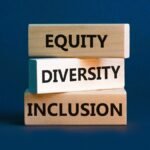ArdorComm Media Bureau
July 6, 2023
Workplace diversity and inclusion have become crucial elements in building a successful and thriving organization. Embracing diversity goes beyond mere representation; it involves creating an environment where individuals from different backgrounds, cultures, and perspectives feel valued, respected, and empowered. By fostering diversity and inclusion, organizations can unlock a multitude of benefits, including increased innovation, enhanced problem-solving capabilities, improved employee engagement, and better decision-making processes. In this article, we will delve into the significance of workplace diversity and inclusion and explore strategies for building a diverse and equitable organization.
Understanding Diversity and Inclusion
Workplace diversity encompasses various dimensions, including but not limited to race, ethnicity,
gender, age, sexual orientation, religion, disability, and socio-economic background. It recognizes that
every individual brings unique experiences, ideas, and talents to the table. Inclusion, on the other
hand, refers to creating an environment that respects and values diversity, where individuals feel a
sense of belonging and can fully contribute to the organization.
Benefits of Workplace Diversity and Inclusion
Enhanced Innovation: A diverse workforce brings together a range of perspectives, experiences, and ideas, which fuels innovation and creativity. Diverse teams are more likely to generate fresh insights, challenge conventional thinking, and develop innovative solutions to complex problems.
Improved Decision Making: When decision-making processes involve diverse voices and perspectives, organizations benefit from a wider range of viewpoints, which leads to better-informed and more effective decisions. Diversity helps prevent groupthink and encourages critical evaluation of ideas.
Increased Employee Engagement and Retention: Inclusive environments foster a sense of belonging, which leads to higher levels of employee engagement and job satisfaction. Employees who feel valued and respected are more likely to be motivated, productive, and committed to their work, leading to improved retention rates.
Expanded Market Reach: A diverse workforce enables organizations to better understand and cater
to a diverse customer base. By reflecting the diversity of the communities, they serve, organizations
can effectively connect with customers, gain new insights, and create products and services that
resonate with a broader range of people.
Strategies for Building a Diverse and Equitable Organization
Leadership Commitment: Building a diverse and inclusive organization starts with strong leadership
commitment. Leaders must demonstrate their commitment to diversity and inclusion through their
words, actions, and decision-making. They should set clear goals, allocate resources, and hold
themselves and others accountable for creating an inclusive workplace culture.
Diverse Hiring Practices: Organizations should adopt inclusive hiring practices to attract a diverse pool of candidates. This includes reviewing job descriptions to remove biased language, implementing blind resume screening, and ensuring diverse interview panels. Additionally, organizations should actively seek out talent from underrepresented groups through targeted recruitment initiatives.
Inclusive Policies and Practices: Developing inclusive policies and practices ensures that all employees feel valued and respected. This includes implementing flexible work arrangements, providing reasonable accommodations for employees with disabilities, establishing clear diversity and inclusion policies, and promoting equal opportunities for career advancement.
Diversity and Inclusion Training: Providing diversity and inclusion training for all employees can increase awareness, foster empathy, and promote inclusive behaviours. Training programs should address unconscious bias, cultural competence, and effective communication across diverse teams.
Employee Resource Groups (ERGs): Establishing ERGs can provide a platform for employees to connect, share experiences, and contribute to the organization’s diversity and inclusion initiatives. ERGs can help create a sense of community, provide mentorship opportunities, and act as advocates for underrepresented groups.
Ongoing Measurement and Evaluation: Regularly measuring and evaluating diversity and inclusion efforts is essential to gauge progress and identify areas for improvement. Organizations can conduct employee surveys, track diversity metrics, and analyse representation and advancement data to ensure that diversity and inclusion goals are being met.
Conclusion
Building a diverse and equitable organization is not just a matter of compliance or meeting quotas; it is a strategic imperative for long-term success. Embracing workplace diversity and inclusion fosters innovation, enhances decision-making, improves employee engagement, and expands market reach. By implementing strategies such as leadership commitment, inclusive hiring practices, inclusive policies, diversity training, ERGs, and ongoing measurement and evaluation, organizations can create an environment where all individuals feel valued, respected, and empowered to contribute their unique perspectives and talents. Ultimately, a diverse and inclusive workplace cultivates a culture of belonging, leading to increased organizational success and a positive impact on society as a whole.


